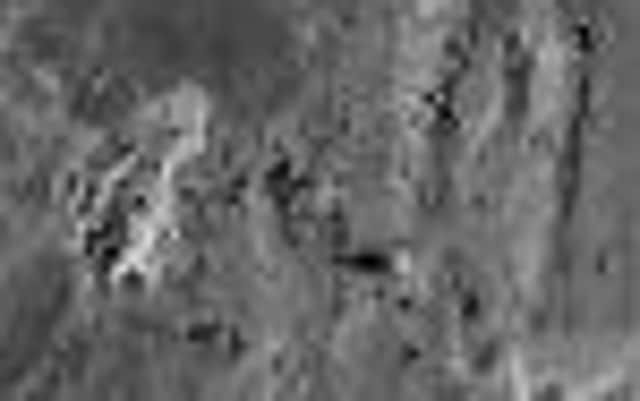Gaze the Titanic: stunning seabed images


More than 130,000 photos have been used to create the scan of a three-mile by five-mile area that it is hoped will provide fresh clues about what happened on the night the supposedly unsinkable superliner hit an iceberg and disappeared beneath the waves.
Sonar imaging taken by underwater robots show hundreds of objects and pieces of the Titanic, which sank 100 years ago next month, killing more than 1,500 people.
Advertisement
Hide AdAdvertisement
Hide AdSome discoveries from the new map are being kept under wraps in advance of a TV documentary to mark the anniversary next month, but the detailed images revealed so far show that the stern rotated like a helicopter blade as the ship sank, rather than plunging straight down. Researchers drew this conclusion from marks visible on the ocean floor to the stern’s west and the fact that virtually all the debris is found to the east (pictured above).
The images show a huge tangle of the remains of a deckhouse; a large chunk of the side of the ship measuring more than 60 feet long and weighing more than 40 tonnes; pieces of the ship’s bottom; and a hatch cover that blew off the bow section as it crashed to the bottom. Other items include five of the ship’s huge boilers, a revolving door and even a lightning rod from a mast.
Parks Stephenson, a Titanic historian who was a consultant on the 2010 expedition which collected the photos, said previous maps were incomplete.
He said: “Nothing like this has ever been done for the Titanic site. With the sonar map, it’s like suddenly the entire room lit up and you can go from room to room with a magnifying glass and document it.”
The expedition team ran two independently self-controlled robots known as autonomous underwater vehicles (AUVs) along the ocean floor day and night. The torpedo-shaped AUVs surveyed the site with side-scan sonar, moving at a little more than three miles per hour as they traversed back and forth in a grid pattern, said Paul-Henry Nargeolet, the expedition’s co-leader with RMS Titanic Inc, the legal custodian of the wreck.
The AUVs also took high-resolution photos of a smaller two-mile by three-mile area where most of the debris was concentrated. The photos were stitched together on a computer to provide a detailed picture.
The result is a map that looks something like the Moon’s surface showing debris scattered across the ocean floor well beyond the large bow and stern sections that rest about half a mile apart.
The map provides a forensic tool with which scientists can examine the wreck site much the way an plane wreck would be investigated on land, Mr Nargeolet said.
Advertisement
Hide AdAdvertisement
Hide AdHe said: “When you look at the sonar map, you can see exactly what happened.”
The first mapping of the Titanic wreck site began after it was discovered in 1985, using photos taken with cameras aboard a remotely controlled vehicle that did not venture far from the bow and stern. The mapping over the years has improved but this is the first full, detailed map of the entire debris field.
RMS Titanic Inc led the expedition in the summer of 2010 along with Woods Hole Oceanographic Institution in Falmouth, Massachusetts, and the Waitt Institute of La Jolla, California.
By examining the debris, investigators said they can now answer questions like how the ship broke apart, how it went down and whether there was a fatal flaw in the design.